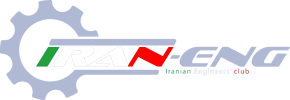 Constantine Pozrikidis "Fluid Dynamics: Theory, Computation, and Numerical Simulation"
Constantine Pozrikidis "Fluid Dynamics: Theory, Computation, and Numerical Simulation"
Springer | English | 2009-05-26 | ISBN: 038795869X | 774 pages | PDF | 9,6 MB
Fluid Dynamics: Theory, Computation, and Numerical Simulation is the only available book that extends the classical field of fluid dynamics into the realm of scientific computing in a way that is both comprehensive and accessible to the beginner. The theory of fluid dynamics, and the implementation of solution procedures into numerical algorithms, are discussed hand-in-hand and with reference to computer programming. This book is an accessible introduction to theoretical and computational fluid dynamics (CFD), written from a modern perspective that unifies theory and numerical practice.
There are several additions and subject expansions in the Second Edition of Fluid Dynamics, including new Matlab and FORTRAN codes. Two distinguishing features of the discourse are: solution procedures and algorithms are developed immediately after problem formulations are presented, and numerical methods are introduced on a need-to-know basis and in increasing order of difficulty. Matlab codes are presented and discussed for a broad range of topics; from interfacial shapes in hydrostatics, to vortex dynamics, to Stokes flow, to turbulent flow.
A supplement to this book is the FORTRAN software library FDLIB, freely available through the Internet, whose programs explicitly illustrate how computational algorithms translate into computer code instructions. The codes of FDLIB range from introductory to advanced, and the problems considered span a broad range of applications; from laminar channel flows, to vortex flows, to flows in aerodynamics. Selected computer problems at the end of each section ask the student to run the programs for various flow conditions, and thereby study the effect of the various parameters determining each flow. FDLIB offers an extensive range of Fortran 77 and Matlab programs that demonstrate the implementation of elementary and advanced algorithms and provide an invaluable resource for research, classroom instruction, and self-study.
This text is a must for practitioners and students in all fields of engineering, computational physics, scientific computing, and applied mathematics. It can be used as a text in both undergraduate and graduate courses in fluid mechanics, aerodynamics, and computational fluid dynamics. The audience includes not only advanced undergraduate and entry-level graduate students, but also a broad class of scientists and engineers with a general interest in scientific computing.
To start download click HERE:
Download
Mirror
Mirror
 The Fortran 2003 Handbook: The Complete Syntax, Features and Procedures
The Fortran 2003 Handbook: The Complete Syntax, Features and Procedures
Springer | 2008-10-16 | ISBN: 1846283787 | 720 pages | PDF | 3,9 MB
Fortran continues to be the premier language used in scientific and engineering computing since it’s introduction in the 1950s. Fortran 2003 is the latest standard version and has many excellent modern features that assist programmers in writing efficient, portable and maintainable programs that are useful for everything from ‘hard science’ to text processing.
The Fortran 2003 Handbook is the definitive and comprehensive guide to Fortran 2003, the latest standard version of Fortran. This all-inclusive volume offers a reader-friendly, easy-to-follow and informal description of Fortran 2003, and has been developed to provide not only a readable explanation of features, but also some rationale for the inclusion of features and their use. Experienced Fortran 95 programmers will be able to use this volume to assimilate quickly those features in Fortran 2003 that are not in Fortran 95 (Fortran 2003 contains all of the features of Fortran 95).
Credits to original uploader
DOWNLOAD








